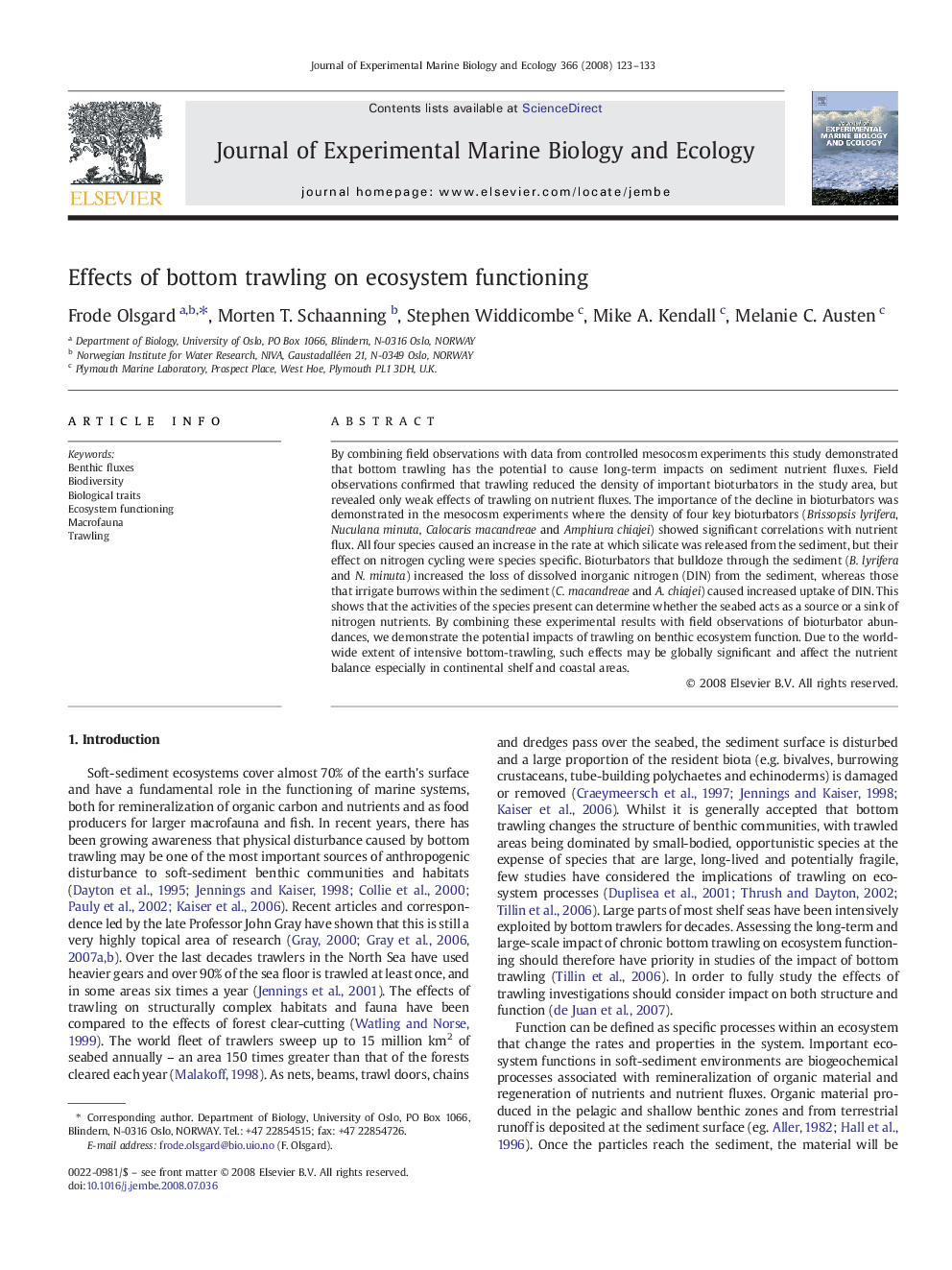| Article ID | Journal | Published Year | Pages | File Type |
|---|---|---|---|---|
| 4397199 | Journal of Experimental Marine Biology and Ecology | 2008 | 11 Pages |
By combining field observations with data from controlled mesocosm experiments this study demonstrated that bottom trawling has the potential to cause long-term impacts on sediment nutrient fluxes. Field observations confirmed that trawling reduced the density of important bioturbators in the study area, but revealed only weak effects of trawling on nutrient fluxes. The importance of the decline in bioturbators was demonstrated in the mesocosm experiments where the density of four key bioturbators (Brissopsis lyrifera, Nuculana minuta, Calocaris macandreae and Amphiura chiajei) showed significant correlations with nutrient flux. All four species caused an increase in the rate at which silicate was released from the sediment, but their effect on nitrogen cycling were species specific. Bioturbators that bulldoze through the sediment (B. lyrifera and N. minuta) increased the loss of dissolved inorganic nitrogen (DIN) from the sediment, whereas those that irrigate burrows within the sediment (C. macandreae and A. chiajei) caused increased uptake of DIN. This shows that the activities of the species present can determine whether the seabed acts as a source or a sink of nitrogen nutrients. By combining these experimental results with field observations of bioturbator abundances, we demonstrate the potential impacts of trawling on benthic ecosystem function. Due to the world-wide extent of intensive bottom-trawling, such effects may be globally significant and affect the nutrient balance especially in continental shelf and coastal areas.
